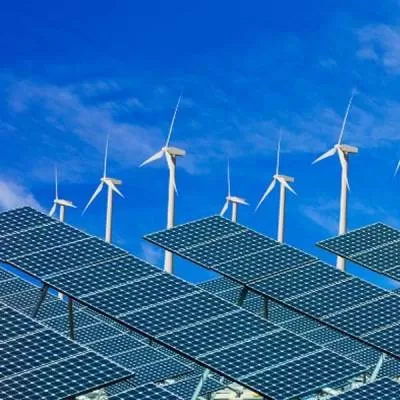Schedule a Call Back
Land conflicts, population density hinder India's renewable energy goals
 A recent report by the Council on Energy, Environment and Water (CEEW) suggests that India’s renewable energy (RE) capacity could theoretically surpass 24,000 gigawatts (GW), though achieving just a portion of this—approximately 7,000 GW needed for net-zero emissions by 2070—will be challenging. The obstacles stem from issues related to land and water availability, as well as population density.
A recent report by the Council on Energy, Environment and Water (CEEW) suggests that India’s renewable energy (RE) capacity could theoretically surpass 24,000 gigawatts (GW), though achieving just a portion of this—approximately 7,000 GW needed for net-zero emissions by 2070—will be challenging. The obstacles stem from issues related to land and water availability, as well as population density.
The report, titled "Unlocking India’s Renewable Energy and Green Hydrogen Potential: An Assessment of Land, Water, and Climate Nexus," highlights major challenges as India aims to grow from its current renewable capacity of 150 GW to a more ambitious goal of 1,500 GW in the near future. Beyond that, the challenges become even more significant, complicating the country’s pursuit of net-zero emissions.
One of the report’s significant findings is the limiting effect of population density on renewable energy deployment. It notes that areas with a population density below 250 people per square kilometre account for only 29 per cent of the nation’s onshore wind potential and 27 per cent of its solar potential, making it difficult to install new infrastructure without impacting inhabited land.
Additionally, the report highlights that land disputes further constrain the development of renewable projects. Only 35 per cent of onshore wind potential and 41 per cent of solar potential are in regions free from historical land conflicts. These disputes often arise from competing land uses, such as agriculture and residential areas, complicating the acquisition of large tracts of land for renewable energy projects.
The report also identifies key states like Odisha and Madhya Pradesh as strategically important for expanding India’s renewable energy capabilities due to their vast low-cost solar potential and existing infrastructure that can support large-scale power generation and distribution.
In the area of green hydrogen, which is vital for India’s clean energy transition, the report estimates that the country could produce around 40 million tonne per annum (MTPA) by 2050 at competitive costs, provided water management challenges are addressed. The production of green hydrogen heavily depends on the availability and effective management of water resources, which are essential for producing hydrogen through electrolysis.


Subscribe Now
Subscribe to our Newsletter & Stay updated
RECENT POSTS
Popular Tags
Folliow us
Related Stories
CommScope Launches CableGuide 360 and Enhanced FiberREACH Solutions
CommScope, a global leader in network connectivity, has introduced two new solutions under its SYSTIMAX® 2.0 portfolio—the enhanced FiberREACH�...
Centre, Karnataka To Support Mango Farmers Amid Price Drop
In a significant move to support mango farmers in Karnataka facing falling prices, the Union Minister for Agriculture, Farmers’ Welfare and Rur...
Lodha Buys Rs 5.67 Billion Transit Units in Mankhurd
Mumbai-based listed real estate developer Lodha Developers Limited has acquired 945 permanent transit camp (PTC) units measuring 339,000 square fee...









